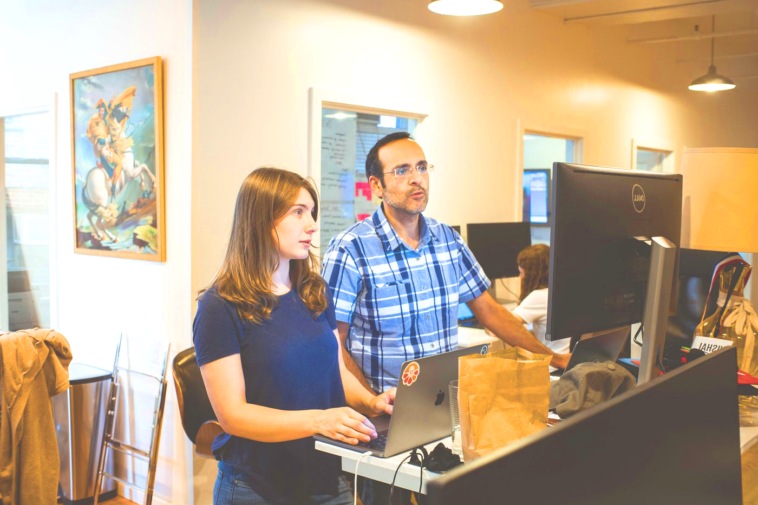In today’s dynamic work landscape, remote engineering communication has become an integral part of successful project execution. As teams collaborate across geographical boundaries, the need for clear and concise communication has never been more crucial.
Challenges in Remote Engineering Communication
Table of Contents
- 1 Challenges in Remote Engineering Communication
- 2 Strategies for Clarity in Remote Communication
- 3 Conciseness in Written Communication
- 4 Leveraging Technology for Seamless Communication
- 5 Building a Remote Communication Culture
- 6 Overcoming Language Barriers
- 7 Case Studies: Successful Remote Engineering Communication
- 8 Addressing the Human Element
- 9 Measuring and Improving Communication Effectiveness
- 10 Conclusion
- 11 FAQs
Perplexity in Virtual Collaboration
One of the primary challenges faced in remote engineering communication is the perplexity that arises due to the absence of face-to-face interactions. Team members may find it challenging to grasp the nuances of virtual collaboration, leading to misunderstandings and delays.
Read More : Hyperwrite AI Personal Writing Assistant For Content Writers
Burstiness and Its Impact on Team Dynamics
The burstiness of communication sudden spikes or lulls in information flow can disrupt the rhythm of a remote engineering team. It’s essential to address burstiness to ensure a steady and efficient workflow.
Strategies for Clarity in Remote Communication
Utilizing Project Management Tools
Project management tools play a pivotal role in maintaining clarity. These tools enable teams to organize tasks, set priorities, and track progress, ensuring that everyone is on the same page.
Establishing Clear Communication Channels
Choosing the right communication channels is crucial. Whether it’s email, instant messaging, or video conferencing, selecting the appropriate channel for the message at hand enhances clarity.
Defining Roles and Responsibilities
Clearly defined roles and responsibilities help avoid confusion. Each team member should have a clear understanding of their tasks and how they contribute to the overall project.
Regular Check-ins and Updates
Frequent check-ins and updates ensure that everyone is aligned. Regular communication helps in addressing challenges early on and keeps the team motivated.
Conciseness in Written Communication

The Art of Effective Email Communication
In the virtual realm, emails are a primary mode of communication. Mastering the art of crafting concise and impactful emails is essential for effective remote engineering communication.
Streamlining Documentation Processes
Documentation should be streamlined to convey information efficiently. Avoid unnecessary details and focus on key points to maintain conciseness.
Leveraging Technology for Seamless Communication
Video Conferencing Best Practices
Video conferencing brings a sense of connection to virtual teams. Implementing best practices, such as a well-lit environment and clear audio, enhances the quality of virtual meetings.
Instant Messaging Tools for Quick Updates
Instant messaging tools facilitate quick updates and informal communication. Utilizing these tools for non-critical information helps in reducing email clutter.
Building a Remote Communication Culture
Fostering Team Collaboration
Building a culture of collaboration is essential. Encouraging teamwork and creating opportunities for virtual social interactions strengthens team bonds.
Encouraging Open Dialogue
Promoting open dialogue creates an environment where team members feel comfortable expressing their thoughts and ideas, fostering innovation.
Celebrating Achievements and Milestones
Acknowledging and celebrating achievements, even in a virtual setting, boosts team morale. Recognition contributes to a positive remote communication culture.
Overcoming Language Barriers
Importance of a Common Language
Establishing a common language, even if it’s not the native language of all team members, promotes understanding. It minimizes the risk of misinterpretation due to language differences.
Tools for Language Translation
Language translation tools can bridge communication gaps. Investing in such tools ensures that language barriers do not hinder effective communication.
Case Studies: Successful Remote Engineering Communication
Real-life Examples of Companies Embracing Clear Communication
Examining case studies of companies successfully navigating remote engineering communication provides insights into practical strategies.
Lessons Learned from Their Experiences
Learning from the experiences of others helps in avoiding common pitfalls and implementing proven strategies for effective communication.
Addressing the Human Element
Recognizing Emotional Nuances in Virtual Conversations
Remote communication often lacks the emotional cues present in face-to-face interactions. Being mindful of emotional nuances and addressing them proactively fosters a positive team environment.
Building Strong Relationships Remotely
Building relationships remotely requires intentional efforts. Virtual team-building activities and personal check-ins contribute to the development of strong, cohesive teams.
Measuring and Improving Communication Effectiveness
Feedback Mechanisms
Implementing feedback mechanisms allows teams to assess communication effectiveness. Regular feedback loops help in identifying areas for improvement.
Continuous Improvement Strategies
Communication strategies should be dynamic. Regularly evaluating and refining communication practices ensures they remain effective in an ever-evolving remote work landscape.
Read More : How to Log In to a Router and Change Router Settings
Conclusion
In conclusion, mastering the best practices for clear and concise remote engineering communication is paramount for success in the modern workplace. As teams continue to navigate virtual collaborations, adopting these strategies will contribute to enhanced efficiency and stronger team dynamics.
FAQs
1 . How can I enhance my written communication skills in a remote setting?
- Enhance your written communication by practicing clarity, using concise language, and seeking feedback from peers.
2 . Are there specific tools recommended for real-time collaboration?
- Tools like Slack, Microsoft Teams, and Asana are popular choices for real-time collaboration and project management.
3 . What role does cultural sensitivity play in remote communication?
- Cultural sensitivity is crucial to understanding diverse perspectives and avoiding miscommunication. Be mindful of cultural nuances in your interactions.
4 . How can teams maintain a sense of camaraderie in a virtual environment?
- Foster camaraderie through virtual team-building activities, regular check-ins, and celebrating achievements together, even from a distance.
5 . What are the common pitfalls to avoid in remote engineering communication?
- Avoid communication silos, lack of clarity in roles, and assuming everyone interprets information the same way. Regularly assess and address these challenges.




